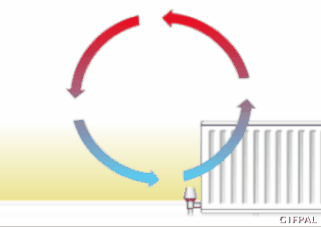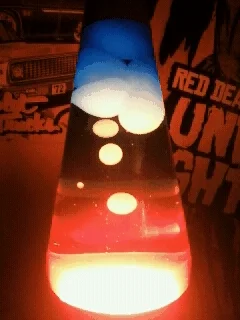Lab # 2 – Crazy Coasters and the Exploration of Potential
vs. Kinetic Energy
Introduction
Who likes roller coasters? I do! The purpose of the coaster's initial ascent is to build up its
potential energy. The concept of potential energy, often referred to as
energy of position, is very simple: As the coaster gets higher in the
air, gravity can pull it down a greater distance. You experience this
phenomenon all the time: think about riding your bike or pulling your sled
to the top of a big hill. The potential energy you build going up the hill can
be released as kinetic energy -- the energy of motion that takes you
down the hill.
Problem
How does the starting height of a marble on a coaster track affect the speed it gathers to complete a successful loop?
Hypothesis
I hypothesize that if... _________________________________________________________________________________
then... __________________________________________________________________________________________________
because... __________________________________________
|
|
Materials
Foam pipe insulation
Glass marble
Ruler
Tape
Triple beam balance
Procedure
- Construct your crazy coaster track using the materials provided.
- Lay the track on the ground and make a loop with 1/3 of the length;
the loop should be ~ 24-30 cm in diameter.
Tape the loop to the side of the track to keep its shape.
- Take turns trying to get the marble to complete the loop
successfully; a marble that does not complete the loop or jumps the track
is unsuccessful. Record your data
in the table below and make any additional observations on its energy.
- Using a triple beam balance, weigh the mass of the marble and enter it below.
- Measure the length of track and record your data into your Results.
Variables:
Independent
|
|
Dependent
|
|
Constants
|
|
Additional Data
Loop diameter = ___ cm
Mass of marble = ___ grams
Results
Starting height (cm)
|
Successful loop completion by
marble – 3 trials (Y/N)
|
Additional observations about the
marble's "energy" – one prediction, one observation, one inference for each starting height.
|
0.0 cm
|
1.
2.
3.
|
Prediction:
Observation:
Inference:
|
25.0 cm
|
1.
2.
3.
|
P:
O:
I:
|
50.0 cm
|
1.
2.
3.
|
P:
O:
I:
|
75.0 cm
|
1.
2.
3.
|
|
100.0 cm
|
1.
2.
3.
|
|
125.0 cm
|
1.
2.
3.
|
|
150.0 cm
|
1.
2.
3.
|
|
MAX ___ cm
|
1.
2.
3.
|
|
|
|
|
Variables:
Independent
|
|
Dependent
|
|
Constants (3)
|
|
Estimate the marble's Kinetic Energy by eyeballing its speed (3 is fastest and 1 is slowest)
Analysis
1.
At what heights were you able to
successfully complete the loop?
2.
Why didn’t the marble complete the
loop at lower positions? At higher
positions?
3.
How does height affect potential
energy?
4.
Where on the crazy coaster was the
marble’s potential energy at its lowest?
Its highest? Draw a picture and
label these positions.
5. Starting height minimum for
successful loop = ____ cm
6. Calculate the marble’s Potential Energy (P.E.), at each position, using the following equation: Potential Energy = (mass)(gravity)(height)
P.E. = mgh
(note: gravity ~ 10 m/s2)
A. Describe the energy the marble would have at a starting height of 0.0 m.
B. Calculate the PE of your marble at a starting height = 0.0 m.
7. The Law of Conservation of Energy states that energy is never created or destroyed; it just changes form. How do your results show this?
8. Bar graph showing how starting height affects the energy of a marble completing a loop.
Graph your data.
X- axis: Starting Height (cm) Potential Energy;
Y- axis: Successful Loop - Yes, No, Kinetic Energy
Conclusion
What was your problem?
|
Restate your hypothesis. Was your hypothesis right or wrong? What facts would support this?
|
What did you learn in this lab?
|
What did you like about this lab?
|
What were some challenges you had to deal with?
|
What could you do next with this problem? What other tests could you perform?
|
Write down any other additional thoughts, observations, inferences, etc.
|
| 5 | 4 | 3 | 2 | 1 | 0 |
| Table of Contents | Page numbers, title of lab, dates all present | One is missing | Two are missing | Two missing & incomplete | Three missing | ZERO |
| Title of Lab | Written with full heading at beginning of lab | Written in wrong location | Partially written | ---- | --- | ZERO |
| Problem | Copied from Science Scholars Blog | Partially written | --- | ---- | --- | ZERO |
| Hypothesis | Written after Problem, If... Then... Because... statement present | If... Then... Because... statement present, but wrong location | Partially written | ---- | --- | ZERO |
| Materials | Copied from Science Scholars Blog | Partially written | --- | ---- | --- | ZERO |
| Data Tables | Ruler used, data entered, units shown, numbers rounded to nearest tenth | One aspect missing | Two aspects missing | Three aspects missing | Incomplete | ZERO |
| Graph | Title present, x and y axes labeled, units listed matches data from tables | One aspect missing | Two aspects missing | Three aspects missing | Incomplete | ZERO |
| Analysis Q/A | ALL of the questions are answered | One aspect missing | Two aspects missing | Three aspects missing | Incomplete | ZERO |
| Conclusion | ALL of the questions are answered | One aspect missing | Two aspects missing | Three aspects missing | Incomplete | ZERO |
| Additional observations, sketches, inferences | Evidence shown | --- | --- | ---- | --- | ZERO |









